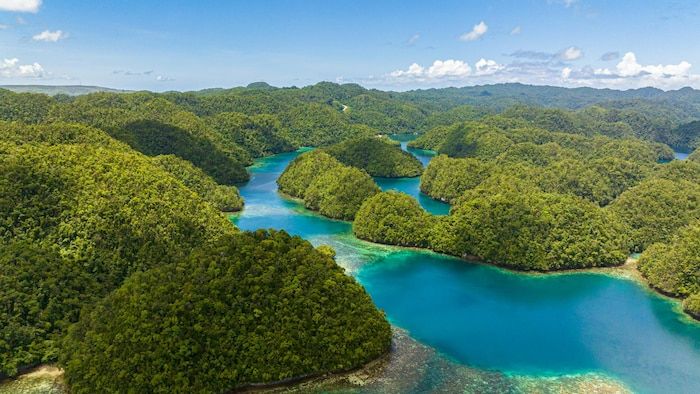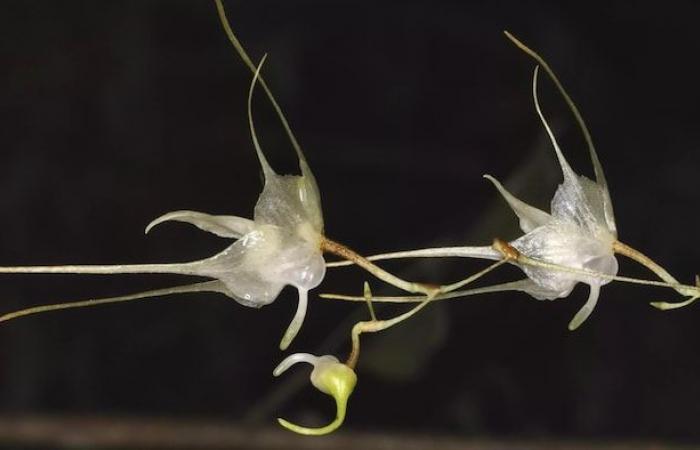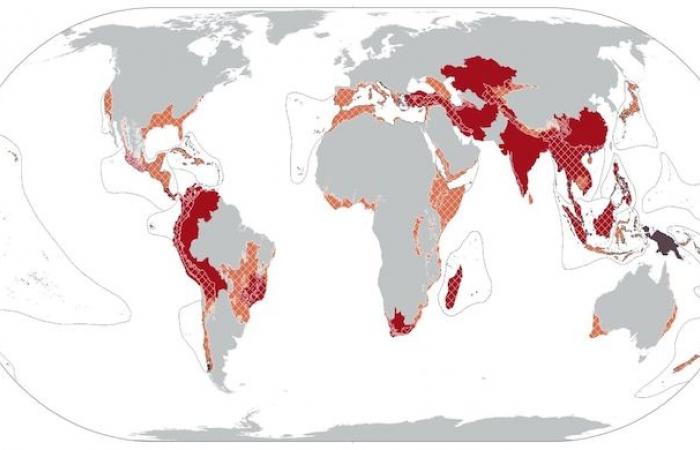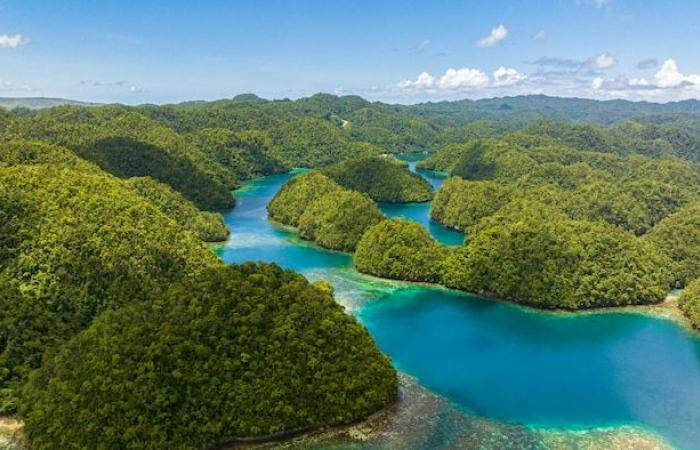From Colombia to Myanmar, botanists have identified 33 “dark spots”, i.e. regions that are home to rare biodiversity little known to the scientific community. Accelerating efforts to document these species, they say, is crucial to achieving the goals agreed by countries at COP15 in Montreal.
According to a team of researchers from the Royal Botanic Gardens, Kew, in the United Kingdom, states, scientists and environmental organizations would benefit from focusing their conservation activities in these areas rich in plant diversity.
In their recent study, published in the journal New Phytologist (New window)botanists advocate the highlighting of these 33 dark spots
(darkspots) which would be full of species that have never been named or geolocated, due to gaps in data collection.
At a time when the decline of biodiversity is accelerating at an unprecedented rate, a burning question
is necessary, they say: Where should efforts be concentrated as a priority to ensure that plant diversity is preserved?
To counter the trend of loss of natural habitats and the species that live there, states around the world, with the exception of the United States, adopted an international agreement at COP15 on biodiversity in Montreal, in December 2022 .
Under the Kunming-Montreal global framework – the equivalent of the Paris Agreement on climate change, but for biodiversity – 30% of land and oceans, particularly areas that cover high importance for biodiversity and ecosystem functions and services
must be duly preserved and managed
by 2030.
An incomplete understanding of plant diversity […] could compromise actions aimed at implementing some of the objectives of the global framework, in particular the protection and restoration of biodiversity.
Lacking more in-depth knowledge about the species they seek to protect, countries struggle to prioritize conservation efforts and end up acting in regions that are not at greatest risk.
In the past, conservation efforts may have proven less effective since they prioritized the protection of vast territories that were not necessarily the richest in biodiversity nor the most threatened, according to Professor Alexandre Antonelli, director of the Botanical Gardens. royals of Kew.
Where to start?
The scientific community already uses the notion of hot spots
(hotspots) of biodiversity, a concept introduced in the early 1990s, to guide its research and conservation activities. Thus, 36 regions of the globe alone concentrate exceptional biodiversity, including plant species that are rare and threatened.
However, these hotspots and other more recent mapping efforts have paid relatively little attention to the taxonomic and geographic knowledge gaps that exist.
note the researchers. However, it is the little-known species that should attract our attention, they add.
In their annual report State of the World’s Plants and Fungi 2023experts from the Royal Botanic Gardens, Kew have estimated that 3 out of 4 plants that have not yet been identified or described are likely to already be at risk of extinction.
Researchers have therefore embarked on a race against time to document the 100,000 plant species that have not yet been formally named.
Open in full screen mode
The small orchid Aeranthes bigibbum, a flower endemic to Madagascar, was recently discovered by botanists.
Photo : Royal Botanic Gardens, Kew / Johan Hermans
To refine the portrait, biologists analyzed historical and geographic data on thousands of vascular plants to try to predict the number of plants that are currently unknown, depending on the country and region. They then sought to determine whether these results were consistent with the 36 hot spots
of biodiversity already recognized.
Their analysis also includes environmental and socio-economic factors, such as climate, topography, poverty, security and the level of protection already granted to biodiversity – elements, they specify, which are rarely taken into account
when evaluating areas to prioritize for data collection and conservation of natural environments.
Among the 33 dark spots
that this method made it possible to identify, Colombia, Myanmar, New Guinea, Peru, the Philippines and Turkey were identified as priority areas.
Open in full screen mode
The researchers have mapped in red what they consider to be the 33 “dark spots” of biodiversity, which are also, in general, “hot spots” of biodiversity. In orange, the “hot spots” which are not considered as “dark spots” by the researchers.
Photo : Plant diversity darkspots for global collection priorities, Onde et al., New Phytologist, Vol. 244
Most of these regions are in tropical Asian countries (14), while temperate Asian and South American countries have 8, respectively. Africa has 2, including Madagascar , while in North America, the only dark point
is found along the southwest coast of Mexico.
Coordinate research before it’s too late
The study’s authors hope that identifying these new regions of interest will make it possible to better coordinate field research expeditions – and speed up the pace.
According to them, these results can fuel discussions at the next major meeting on biodiversity: COP16, which will be held in Cali, Colombia, from October 21 to November 1.
The collection and preservation of plant diversity is urgent, [notamment] to ensure the survival of ecosystems
they say.
Delaying the protection of species and areas can lead to their extinction before they are even named and geolocated.
These little-known species also open the door to a world of discoveries for researchers, who hope to advance science by identifying new organisms. Who knows if these will make it possible to design new drugs or new fuels?

Open in full screen mode
On Bucas Grande Island are species endemic to the Philippines, one of the countries where botanists believe plants have not yet been named or geolocated.
Photo : Getty Images / MARY GRACE VARELA
The authors of the study, however, are careful to point out that any expedition aimed at collecting and identifying new species cannot be done without the consent of indigenous and local communities.
The latter, who hold significant traditional knowledge of the fauna and flora that surround them, should be able to obtain a share of the benefits arising from the exploitation of their biodiversity.
After all, some species may represent a great mystery to the scientific community, but they are often already known and used by those who inhabit the territory.








